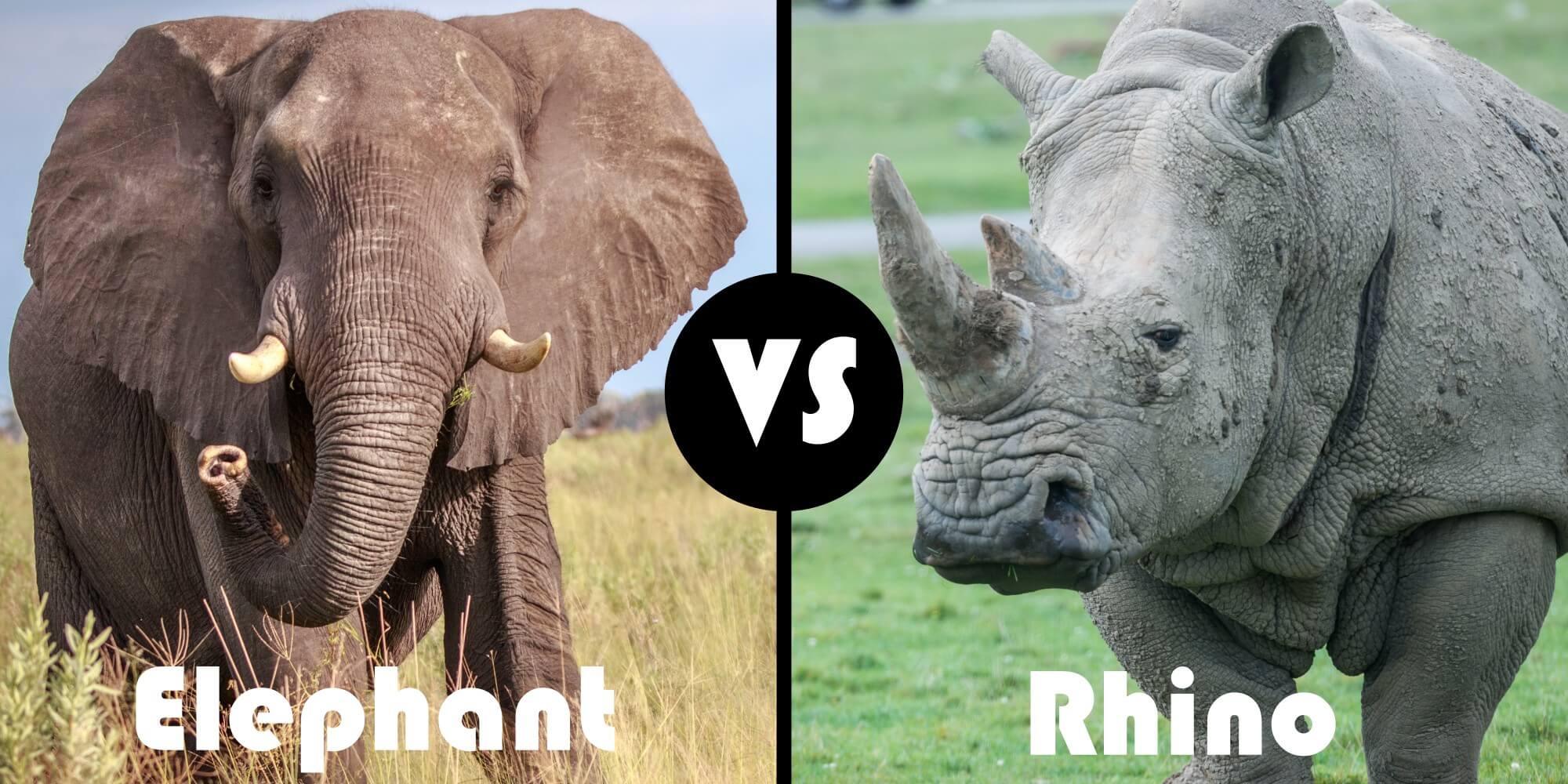Elephants and rhinos are two magnificent creatures that share similarities and differences. Elephants are the largest land animals, growing up to 13 feet tall and weighing 14,000 pounds, with long trunks and massive ears to help them grab food and water. Whereas, rhinos, the largest being the white rhinoceros, are shorter and stockier than elephants, with tough skin and a horn on their snout. Both are social animals and herbivores, but elephants are more social than rhinos and communicate through sounds and body language. Unfortunately, both are threatened by poaching and habitat loss, and efforts are needed to protect them.
Mighty Giants: Elephant vs. Rhino
Introduction
When it comes to powerful creatures that roam the land, the elephant and the rhino are two mighty giants that immediately come to mind. Both have unique characteristics that distinguish them from other animals, making them fascinating to watch and study. In this article, we’ll compare and contrast elephants and rhinos to see what makes them so special.
Physical Characteristics
Elephants are the world’s largest land animals, with the African elephant growing up to 13 feet tall and weighing as much as 14,000 pounds. They have long trunks that can be used to grab food and water, as well as massive ears that they can flap to cool themselves down. Rhinos, on the other hand, are typically shorter and stockier than elephants, with the white rhinoceros being the largest. They are known for their tough skin, which looks like armor, and the horn on their snout. Depending on the species, a rhino can weigh anywhere from 1,500 to 5,500 pounds.
Habitat
Both elephants and rhinos are native to Africa and Asia, though there are distinct differences in their preferred habitats. Elephants live in a variety of environments, including grasslands, forests, and deserts. They need access to water and shade, but they can travel for miles each day to find both. Rhinos, on the other hand, tend to live in grasslands, savannas, and forests near water sources. They often wallow in mud and water to cool down and can go long periods without drinking.
Diet
Elephants are herbivores, meaning they only eat plants. They enjoy a variety of vegetation, including grasses, leaves, and fruits. They can consume up to 300 pounds of food per day, which they continuously graze on throughout the day. Rhinos are also herbivores, but they have more specialized diets. White rhinos eat mostly grass, while black rhinos enjoy a variety of plants and fruits. They need to consume around 50-100 pounds of food per day, but they are able to go up to five days without eating.
Behavior
Both elephants and rhinos are social animals and are often found in herds. Elephants are known for their strong family bonds, which can last a lifetime. They communicate through a variety of sounds and body language, including trumpeting, rumbling, and flapping their ears. Rhinos are not as social as elephants and prefer to spend time alone or in small groups. However, they do have a complex language of grunts, snorts, and whistles that they use to communicate with each other.
Threats
Unfortunately, both elephants and rhinos are facing threats in the wild. Elephants are often targeted by poachers who are after their ivory tusks, which can fetch high prices on the black market. They are also losing their habitats to deforestation, which makes it harder for them to find the resources they need to survive. Rhinos are similarly threatened by poaching, as their horns are highly valued for their supposed medicinal properties. Rhino populations have decreased dramatically in recent years, with some species being declared critically endangered.
Conclusion
Overall, both elephants and rhinos are remarkable animals that are worth celebrating and protecting. While they have their differences, they are both important players in their respective ecosystems and play a vital role in keeping them balanced. By learning more about these incredible creatures, we can help ensure their survival for future generations to appreciate.
